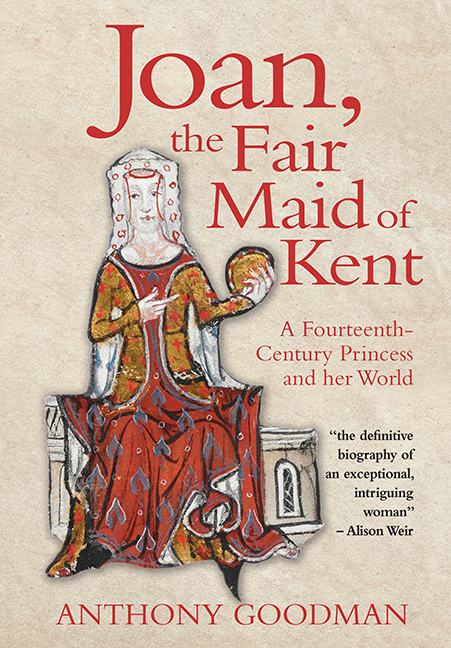Book contents
- Frontmatter
- Dedication
- Contents
- List of Illustrations
- List of Abbreviations
- Maps
- Genealogical Tables
- 1 Loosened Bonds
- 2 Tragic Beginnings
- 3 Bigamy
- 4 Married Bliss
- 5 A Whirlwind Rom
- 6 Princess of Wales and of Aquitaine
- 7 Deaths of Princes
- 8 The King's Mother
- 9 Terrors and Tribulations
- 10 Venus Ascending?
- Notes
- Bibliography
- Acknowledgements
- Index
6 - Princess of Wales and of Aquitaine
Published online by Cambridge University Press: 25 October 2017
- Frontmatter
- Dedication
- Contents
- List of Illustrations
- List of Abbreviations
- Maps
- Genealogical Tables
- 1 Loosened Bonds
- 2 Tragic Beginnings
- 3 Bigamy
- 4 Married Bliss
- 5 A Whirlwind Rom
- 6 Princess of Wales and of Aquitaine
- 7 Deaths of Princes
- 8 The King's Mother
- 9 Terrors and Tribulations
- 10 Venus Ascending?
- Notes
- Bibliography
- Acknowledgements
- Index
Summary
A NOVEL ENVIRONMENT
THE NEWLY CREATED PRINCIPALITY of Aquitaine comprised those territories which had been granted to Edward III and his heirs in south-west France in full sovereignty by John II in 1360. At its governmental core was Gascony, ruled by the kings of England as its dukes since Eleanor of Aquitaine's husband became Henry II in 1154. Besides Gascony, John II had ceded to Edward other substantial parts of the historical duchy of Aquitaine: to the north of Gascony, Saintonge, Angouleme, Limousin and Poitou; to the east, Perigord, Agenais, Cahorsin, Quercy, and to the south, Armagnac, Condom, Bigorre and Rouergue. In January 1361, Sir John Chandos had been appointed ‘lieutenant and captain general … and special conservator’ of the peace and truce in France. He was one of those who had the tasks of negotiating the return of the places ceded by Edward to the allegiance of the French Crown which still housed supposedly ‘pro-English’ garrisons, and of receiving homages to Edward III in those places conceded to him. In many parts of Aquitaine there was reluctance to embrace a long-dormant Plantagenet allegiance. Chandos was tactful but firm, confirming with alacrity the privileges about whose security under an imposed alien rule nobles and communes were anxious. He had completed the task by the spring of 1362.
According to a monk-chronicler at Canterbury Cathedral Priory, the Prince arrived in Gascony on 29 June 1363. He stayed for a while at the castle of Lormont, three miles outside Bordeaux. It was a residence of the archbishops of Bordeaux. The city was the only one in south-west France comparable to London in its size of population (about 30,000 in 1300), in the scope of its trade and in the wealth of its leading merchants. They were dominant in the civic elite, and played important roles in the overseas trade of south-west France, importing foodstuffs and finished goods, and shipping wine produced in the Bordelais and the wider south-west down the River Garonne for export, much of it to England or Flanders. Indeed, the recurrent wars with the French Crown since the 1290s had disrupted the trade of Bordeaux, especially through long-term damage to Aquitainian viticulture. The peace of 1360 gave hope of renewed stability and a recovery of prosperity.
- Type
- Chapter
- Information
- Joan, the Fair Maid of KentA Fourteenth-Century Princess and her World, pp. 81 - 108Publisher: Boydell & BrewerPrint publication year: 2017

